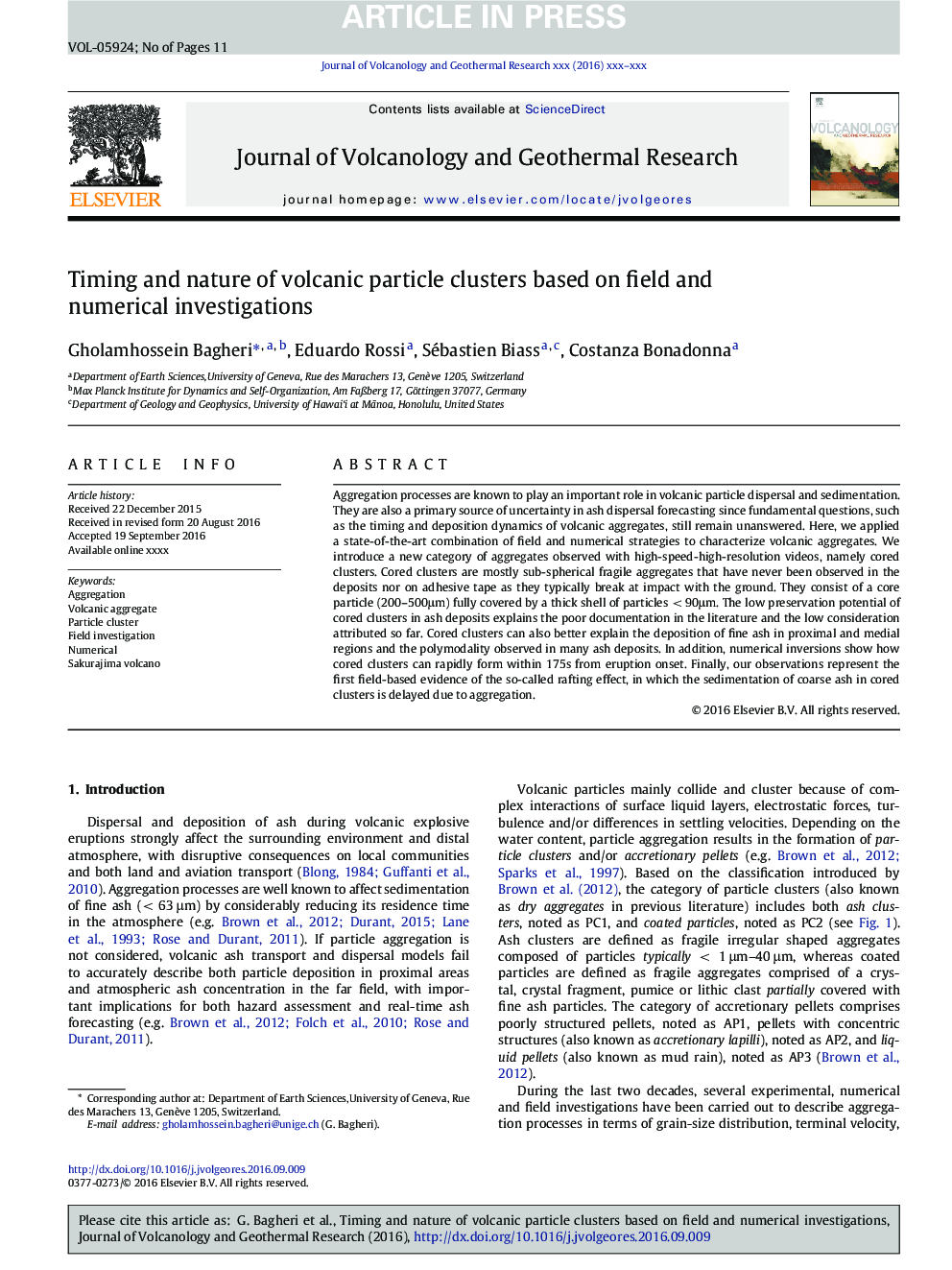| Article ID | Journal | Published Year | Pages | File Type |
|---|---|---|---|---|
| 5783793 | Journal of Volcanology and Geothermal Research | 2016 | 11 Pages |
Abstract
Aggregation processes are known to play an important role in volcanic particle dispersal and sedimentation. They are also a primary source of uncertainty in ash dispersal forecasting since fundamental questions, such as the timing and deposition dynamics of volcanic aggregates, still remain unanswered. Here, we applied a state-of-the-art combination of field and numerical strategies to characterize volcanic aggregates. We introduce a new category of aggregates observed with high-speed-high-resolution videos, namely cored clusters. Cored clusters are mostly sub-spherical fragile aggregates that have never been observed in the deposits nor on adhesive tape as they typically break at impact with the ground. They consist of a core particle (200-500μm) fully covered by a thick shell of particles < 90μm. The low preservation potential of cored clusters in ash deposits explains the poor documentation in the literature and the low consideration attributed so far. Cored clusters can also better explain the deposition of fine ash in proximal and medial regions and the polymodality observed in many ash deposits. In addition, numerical inversions show how cored clusters can rapidly form within 175s from eruption onset. Finally, our observations represent the first field-based evidence of the so-called rafting effect, in which the sedimentation of coarse ash in cored clusters is delayed due to aggregation.
Related Topics
Physical Sciences and Engineering
Earth and Planetary Sciences
Geochemistry and Petrology
Authors
Gholamhossein Bagheri, Eduardo Rossi, Sébastien Biass, Costanza Bonadonna,
